
Table of contents:
- Author Bailey Albertson [email protected].
- Public 2023-12-17 12:53.
- Last modified 2025-01-23 12:41.
How to remove glue from hands, fingers, nails and hair
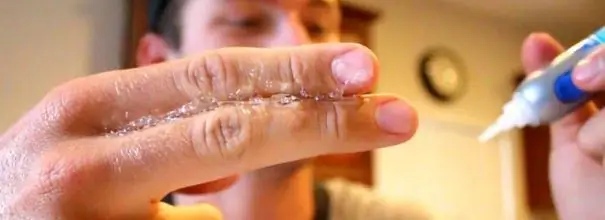
How many things could have been thrown away if humanity had not invented glue. How many crafts owes their existence to this tool. Shoes, furniture, toys, dishes, jewelry - this is an incomplete list of what we have to repair with it. But in most cases, not only parts are glued together, but also fingers. There are effective means and ways to remove glue from skin, hair, nails.
Content
-
1 Features, types, properties of glue
- 1.1 Why is it difficult to remove glue from skin
- 1.2 Ways to remove glue depending on its type
-
2 How to remove glue from hands, fingers, nails and hair with professional and folk remedies
- 2.1 Professional and chemical products
-
2.2 Folk ways
2.2.1 Video: how to sever glued fingers using rubbing alcohol
- 2.3 Mechanical methods
- 2.4 How to clean glue from nails
- 2.5 How to remove glue from hair
- 2.6 Ways to remove glue from baby's skin
- 3 Don'ts and Precautions for Handling Adhesive
Features, types, properties of glue
Probably, this happened to everyone: they tried to glue the broken part, but in the end they got their hands dirty. The situation is the worst when working with superglue. It is the most difficult to wash it off. For gluing solid objects, use:
- liquid formulations - Second, Super Moment and other types, which instantly and tightly connect parts to each other;
- viscous adhesives - Moment Universal, liquid glass and others that harden more slowly, but allow you to glue even small parts with pinpoint precision.
If long-hardening species can be washed off even some time after contact with the skin, then this will not work with liquid glue. It almost firmly eats into the skin in a matter of seconds.

Liquid glue is instantly absorbed into the skin and is very difficult to remove
Why is it difficult to remove glue from skin
Superglue owes its ability to firmly bond parts made of different materials to cyanoacrylate - a substance that instantly glues smooth surfaces. The liquid formulation instantly penetrates all pores and cracks for maximum adhesion. Due to moisture, which is adsorbed on any surface and is present in the air, the glue hardens. This ability explains its rapid drying when stored in a loosely closed tube.
When working with cyanoacrylate, you need to be as precise and accurate as possible, since removing traces of it is quite difficult. For this reason, many shoemakers refuse to repair shoes after trying to fix them themselves with super glue. This substance penetrates the surface so strongly that it is not always possible to remove it completely without damaging the product. The glued parts acquire their maximum strength after two hours, so it is important to act as quickly as possible.
After getting the glue on the skin of the hands, discomfort is felt from unpleasant tightening. This does not pose a health hazard, since only the upper layer of the epidermis suffers. You can harm yourself by trying to tear off an unpleasant hardened substance with your teeth, a knife and other improvised means. After such actions, a wound is formed and not only discomfort is felt, but pain and burning. If glue gets on the mucous membranes, a chemical burn occurs and medical attention may be needed. But the most dangerous thing is if cyanoacrylate gets in the eyes: you risk losing your eyesight. The lining of the organ may rupture, so immediately flush your eyes with plenty of water and run to the hospital.

Glue on the skin is not dangerous, but it brings discomfort from unpleasant tightening
Superglue was accidentally made by American doctor Gerry Covert. He tried to invent plastic for making gun scopes. Working with synacryl, he discovered that when in contact with moisture, this substance is capable of gluing almost everything. Kuvert did not attach importance to his invention. The substance was patented only in 1955, and went on sale in 1958, caused a real stir.
Ways to remove glue depending on its type
Not every tool (or method) is equally effective for all types of glue.
- Stationery glue can be easily washed with laundry soap, not only from the skin and nails, but also from the hair.
- Liquid glass and silicate glue are removed with soap, soda and pumice, if the glue has not had time to dry completely. If the substance has already hardened, then use ammonia.
- The moment is removed by any of the above means, depending on the degree and age of the contamination. They mainly use soap, soda, salt, vegetable oil, or nail polish remover.
- Viscous types of this product, which do not set instantly, are quite successfully removed with the help of vinegar and alcohol.
- The most difficult situation is with the Second or Super Moment means. They are the reason for most of the glued fingers. Only minor stains are removed with baking soda, salt, pumice or grease. In severe cases, you cannot do without such solvents as White spirit or acetone.
How to remove glue from hands, fingers, nails and hair with professional and folk remedies
The most commonly affected hands are palms and fingers. There are effective folk ways to remove glue from the body. You can also use industrial products and some chemicals.
Professional and chemical products
Solvents of different action enter into a chemical reaction with the components of the glue and effectively remove it from the skin and nails.
-
Anticlee is a specialty product that you can buy at any hardware or hardware store. It removes glue not only from work surfaces, but also from palms, fingers, nails and other parts of the body. It is easy to use: the product is applied to a cotton swab, the stained area is wiped, and after a while the glue dissolves, and the skin becomes clean and smooth. After the end of the procedure, hands are thoroughly cleaned with soap.

Anticleus Some manufacturers produce glue and anti-glue designed to remove it in one package
-
White spirit acts quite aggressively on the skin, dehydrating and drying it out. Plus it has a disgusting smell. If your fingers are just a little dirty, it will be enough to soak a sponge or swab in solvent and rub the area with glue. If the glue is somehow spilled on the palms, then you will have to wash them with a product until the glue is completely dissolved. It is best not to do this indoors, as White Spirit vapors can cause dizziness and headache, as well as irritation to the eyes and respiratory tract. Unlike superglue, this solvent does not damage the eye tissue, so if it gets into your eyes, it is enough to wash with clean water. Gasoline can be used in the same way.

White Spirit White spirit cleans hands well from superglue, but it dries out the skin and irritates the respiratory tract
-
Acetone is far from the safest remedy. It is best used as "heavy artillery" in cases where other methods have proved powerless. It is a rather aggressive, but still low-toxic solvent. It is not as harmful to the skin as to the mucous membranes. Inhaled acetone vapor can irritate the mucous membranes of the nose, throat and eyes. If you decide to wash the glue with it, do not forget to open the window or even go outside.

Acetone It is recommended to use acetone to remove glue from the body only in extreme cases, when other means have not helped.
-
Acetone nail polish remover is less effective than pure acetone, but safer. Due to the content of glycerin and vitamins, it dries the skin to a lesser extent, and the smell is more pleasant. If the fingers are not very dirty, then it is enough to moisten the sponge and apply the product to the place with dried glue, and after a few minutes remove the contamination with the same sponge or an old toothbrush. If it does not help the first time, repeat the procedure until the substance is completely dissolved.

Nail polish remover Nail polish remover will help remove not only old nail polish, but also glue residues
The disadvantage of these funds is an irritating effect on the skin. For this reason, they are unacceptable if there are wounds, sores or scratches on the hands. Also, acetone-free nail polish removers are considered quite effective. They have a softer effect on the skin, but it will take more time and money to remove the glue.
Another effective remedy is Dimexide. It is a 50% solution of dimethyl sulfoxide, a substance that is a solvent for cyanoacrylate. You can buy it at any pharmacy for almost a penny. It is absolutely harmless to plastic, metal and other materials, but it is dangerous to use this substance for human skin.
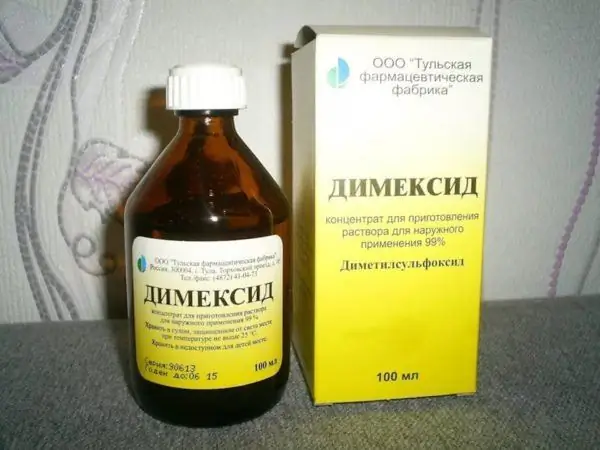
Dimexide perfectly removes superglue from any surfaces, but is harmful to human skin
Folk ways
Antikley and other solvents are not always at hand, and there is an opportunity to hit the road to the nearest household goods store or pharmacy. In such cases, it is worth turning to folk wisdom. In every home, there are likely to be tools with which you can not only stick your fingers, but also clean your nails. This can be done by mechanical and non-mechanical methods. The latter act as a result of a chemical reaction between the adhesive and the agent of choice.
-
Hot water and soap are unlikely to get rid of superglue, which is quite heat resistant and hardens on contact with water. But other types of this product are quite possible to wash. Under the influence of warm water and soap, the glue becomes softer and easily separates from the skin. We pour hot water into a basin, make a soapy solution and put our hands in there. After a few minutes, we begin to rub the areas smeared with glue. You can scratch with your nails, or even better, use an old toothbrush. Sometimes dish washing or hand washing helps.

Wash their hands with soap Using soap and hot water, you can wash away glue that has not yet had time to set.
-
Vinegar 9% also dissolves glue. Since most of the palms and fingers get dirty on the back side, just pour vinegar into your hand and wait 1 minute. Then we wipe the stained area and, if it did not help the first time, repeat the procedure. If your fingers stick together, then we keep our hand in vinegar, which we first pour into a small deep container. Vinegar is still acid, so it is undesirable to use it if there are scratches, cuts or other damage on the skin.

Vinegar Table vinegar can be used to remove glue from your fingers
- 70% acetic acid will help remove dried superglue. But vinegar essence can burn the skin, so use it carefully and only in extreme cases.
- Alcohol is also a solvent for the adhesive. Proceed in the same way as with vinegar.
-
Ammonia. For 1 liter of soapy water, take 2 tbsp. l. ammonia and soak hands in the resulting solution for a few minutes, and then wash thoroughly until the glue is completely removed.

Ammonia To remove glue from human skin, use a soap solution with the addition of ammonia
- Vegetable oil. We grease our hands abundantly with any vegetable oil and after a few minutes we begin to actively rub it into the soiled place. We pay more attention to the edges of the spot. When the glue begins to gradually withdraw, we continue to rub the oil under the lagging edges, and then we try to carefully remove it. This method is good for sensitive skin and for skin with cuts or scratches, when the use of aggressive solvents is unacceptable. Vegetable oil is more effective when you need to clean only a small area of skin, but will not help with sticking fingers together. By the way, instead of vegetable oil, you can use any body oil.
- Apply Vaseline to the glue-stained area and massage gently for 5 minutes. This product destroys some components of adhesives, and since it has emollient properties, it removes dry skin after exposure to superglue.
-
Greasy hand cream. Apply the cream with massage movements and wait for a few minutes. Then we rub the stained place with our fingers, as if wiping off the stain. We do this until the glue is completely removed.

Hand cream Hand cream also helps remove glue
- Salt. This remedy is in every home. It works both chemically and mechanically: first, the salt eats away at the glue, and then scrubs it off the skin like a scrub. Apply to stained areas after washing hands or bath. Rub the salt into the skin in a circular motion until the glue is completely removed. Then wash off with water and apply moisturizer.
- Soda. First, we moisten our hands in warm water. Then we take a little soda and apply it to the place with dried glue - rub the resulting paste until it starts to go away. Baking soda can remove a small amount of glue, but if your fingers are stuck together or too much glue has spilled out, it is unlikely to help.
Video: how to sever glued fingers with rubbing alcohol
Mechanical methods
They work by rubbing and peeling the adhesive from the skin. The most commonly used materials are pumice stone, nail file and sandpaper.
- Pumice is found in every home and can not only make the heels smooth, but also wipe off almost any glue from the skin. First, we soften the glue, for which we make a warm hand bath or wash a mountain of plates. Three pumice stones until the glue is completely removed. We do this carefully so as not to damage the already damaged skin. If the back of the hand or the pads of the fingers is stained, then there will be no harm, since the skin there is thicker.
- To remove dried glue with a nail file, do not wet your hands, but immediately carefully cut off the layers of dirt. Remove the remains with a scrub or salt. It is better to choose not a classic metal nail file, but glass, ceramic or polymer.
- Sandpaper works just like a nail file. Do not take coarse grains, as it can rub the skin until it bleeds.
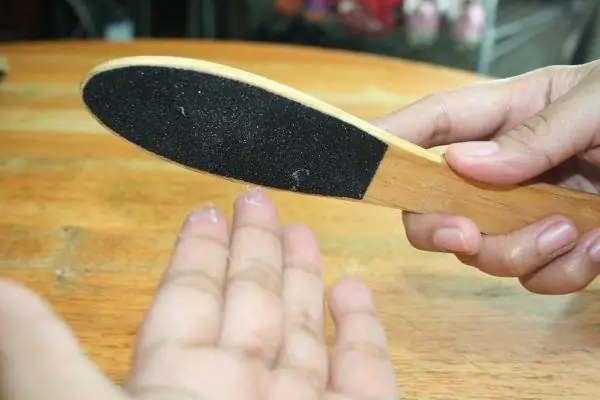
Instead of pumice, you can use a nail file or sandpaper to remove dried glue from your hands.
If the glue on your skin doesn't bother you much and you only get a little dirty on your fingers, you don't need to remove it. Over time, the glue will go away on its own along with the keratinized skin particles, but on condition that you often wash your hands with soap and water.
How to remove glue from nails
Nails are just as likely to get dirty as fingers. But not all of the above methods are suitable for cleaning nails. Abrasives such as pumice and sandpaper will scratch the nail plate. Solvents, alcohol and nail polish remover will help restore nails to their former beauty without completely destroying them. But nail cleaner may suddenly run out and there may be no alcohol in the house. In such situations, sanding and polishing files will help.
- Gently file away the top layer of glue, taking care not to damage the nail plate.
- Then start sanding.
- Polish your nails.
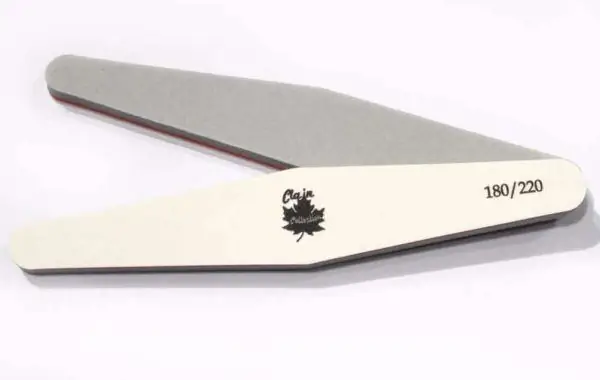
If you don't have alcohol or nail polish remover on hand, you can try to remove the glue from your nails using special files for grinding and polishing.
How to remove glue from hair
Probably the most difficult case. If the ends of the hair get dirty, then you can simply cut them off. But if the glue remains near the hair roots or along their entire length, then it is more difficult to remove it.
- If you have not gotten yourself into superglue, you should not panic. Hair should be thoroughly washed in hot water using shampoo. Repeat the procedure several times. The second is to try combing out the glue with a fine-toothed comb. You can also use vegetable oil. It is also a good mask for hair and scalp.
- If you get dirty with super glue, then only nail polish remover remains. You can try white spirit, but it can cause dermatitis on the scalp.
Hair gets dirty mainly during installation work, for example, when installing a false ceiling. In such cases, liquid glass is most often used. The substance will wash off without any problems if done immediately. If you notice it too late and the glue has dried up, you will have to soak it in the bathroom, and then comb it out for a long time.
Ways to remove glue from baby's skin
Children are more susceptible to chemicals, so there is a real threat of vapor poisoning and burns from the use of solvents. In most cases, children get dirty with office glue or PVA. These types of glue can be washed off with ordinary soap, or you can simply roll them off your hands. If, through your own lack of foresight, a Moment or Super Moment fell into the hands of the child, then start with less aggressive means.
- Try acetone-free nail polish remover first, you can also use baking soda, salt, oil, and petroleum jelly.
- If that doesn't help, run to the pharmacy and buy rubbing alcohol.
- You can try Anticlea. Just read the instructions carefully first.
Do not peel off the glue by mechanical means and use acetone and acetic acid for children. And if the glue gets on the hair and it is impossible to wash it with safe means, do not risk the health of the child and cut it.
Do's and safety precautions when handling glue
There are actions that are unacceptable when cleaning your hands from glue.
- You cannot peel off the glue with a knife: this way you can cut off the skin layer.
- You can't just peel off the dried glue because of the risk of leaving long-term wounds.
- Do not try to separate your fingers without using any means: in places the adhesive will come off along with the skin.
- Superglue, which has not yet had time to fully set, is not removed with water. So it will only harden faster.
- Do not gnaw off the glue with your teeth.
Precautions:
- always wear gloves to keep your fingers from sticking;
- use glue only on work surfaces, not on your knees or on a weight;
- hide your hair under a headdress or headscarf;
- wear safety glasses if you are going to glue the ceiling or work with objects that are above head level;
- use a mask;
- make sure that the nose of the superglue tube does not "look" up: the product can get into the eyes;
- keep the adhesive out of the reach of children.
The described tips will help remove different types of glue from hands, hair, nails and safely cleanse your child's skin. If you know of other methods, be sure to share them in the comments.
Recommended:
How To Remove Hair Dye From Clothes, Remove It From Furniture And Other Items + Photos And Videos
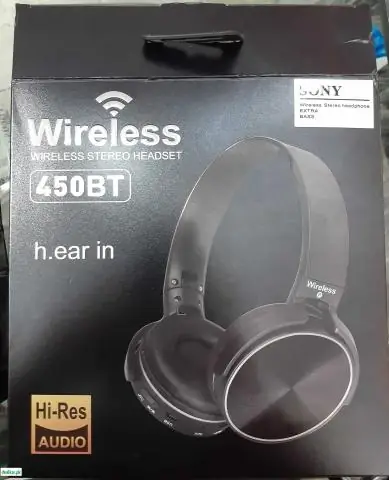
How to chemically remove hair dye stains from fabrics, leather goods, carpets, hard surfaces, and wallpaper
How And How To Wash Polyurethane Foam From Hands, Face And Other Parts Of The Body, As Well As Remove It From Hair + Photos And Videos

Commonly used polyurethane foam is difficult to remove. How to wash it from hands, nails, face and body skin, as well as from hair?
How To Wipe Off Super Glue From Plastic Or Plastic, As Well As Moment, Pva, Second And Others
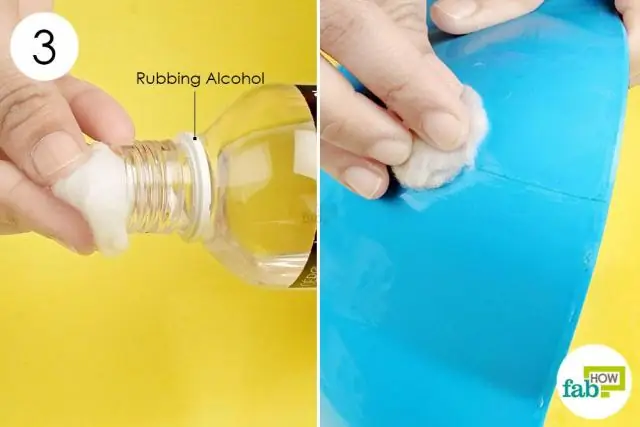
Safe and effective ways to wipe away stains of various glue - Super, Moment, PVA, stationery and others - from plastic. Professional and home remedies
How To Wipe Hair Dye From The Skin Of The Face, Hands, Nails Or Other Parts Of The Body + Photos And Videos
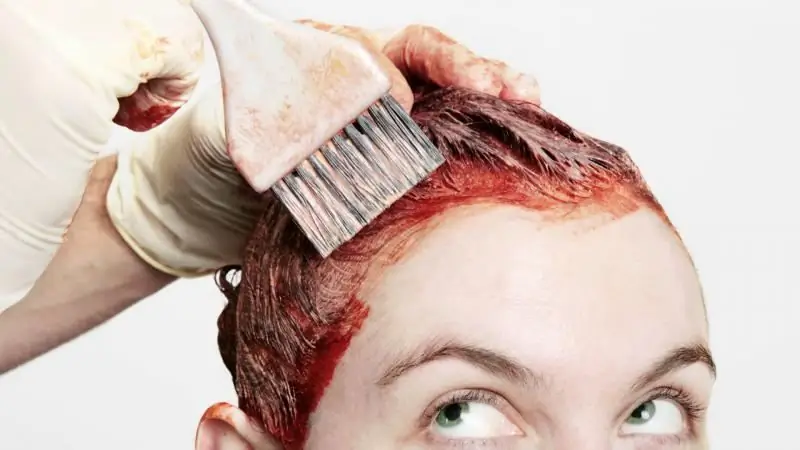
Effective ways to wipe hair dye stains from nails, face and hands. Handy tools, proven recipes, and unsafe but popular drugs
Cystitis In Cats And Cats: Symptoms (blood In Urine And Others) And Treatment At Home, Medications (pills And Others), Veterinarian Advice

What causes cystitis, its symptoms, course forms, diagnosis, treatment. Caring for a sick cat, prevention of cystitis
